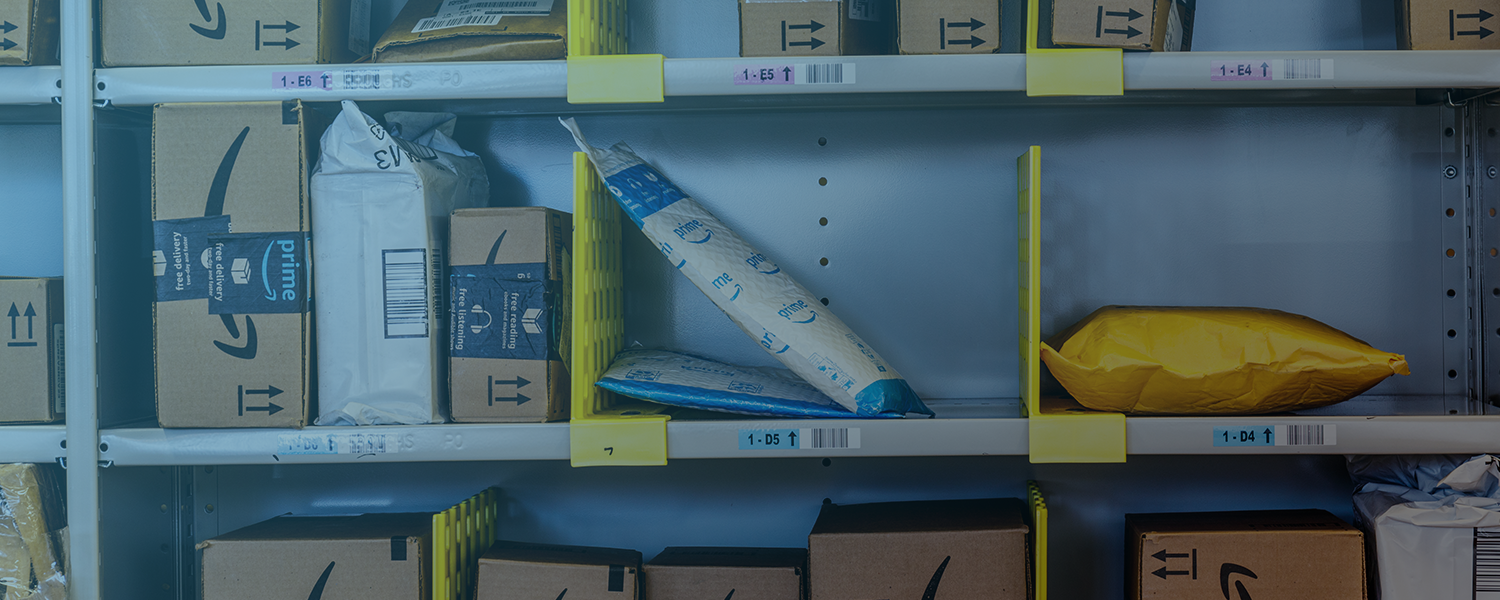Choosing between dropshipping on Amazon vs your own shop is a crucial decision that can significantly impact your e-commerce success. With the dropshipping market projected to reach $476.1 billion by 2026, making the right platform choice is more important than ever. This comprehensive guide examines all critical factors to help you make an informed business decision in 2025.
Table of Contents
What is Dropshipping?
Before diving into the dropshipping Amazon vs own shop comparison, let’s clarify what dropshipping entails. Dropshipping is a retail fulfillment method where you sell products without maintaining inventory. When a customer places an order, your system forwards it to a supplier who ships directly to the customer. This business model eliminates inventory management and shipping logistics, making it an attractive entry point for e-commerce entrepreneurs.
According to recent statistics, approximately 27% of online retailers have adopted dropshipping as their primary fulfillment method, highlighting its growing popularity in the e-commerce landscape. For a comprehensive understanding of dropshipping fundamentals, read our detailed guide on dropshipping basics.
7 Key Comparison Factors: Dropshipping Amazon vs Own Shop
When evaluating dropshipping on Amazon versus your own online shop, consider these seven essential factors that will impact your business success:
1. Reach and Customer Base
The first crucial difference between dropshipping on Amazon vs your own shop is market access:
Amazon’s Marketplace Advantage
Amazon boasts over 300 million active customers worldwide, with approximately 200 million Prime members. When dropshipping through Amazon, you instantly tap into this massive customer base. This immediate access can be invaluable for new e-commerce entrepreneurs who haven’t yet established their market presence.
Furthermore, Amazon processes approximately 66,000 orders per hour, creating enormous potential exposure for your dropshipping products.
Own Shop’s Gradual Growth
With your own online shop, you start with zero visitors and must build traffic through marketing efforts. While this represents a significant initial challenge, it gives you complete control over customer acquisition strategies. You’ll need to invest in SEO, content marketing, social media, and potentially paid advertising to generate traffic.
2. Trust and Credibility
Trust significantly influences purchasing decisions in e-commerce:
Amazon’s Established Trust
89% of consumers are more likely to buy products from Amazon than other e-commerce sites, primarily due to trust. When dropshipping on Amazon, you leverage this established credibility, potentially increasing conversion rates. Customers feel secure knowing Amazon’s customer protection policies back their purchases.
Building Trust with Your Own Shop
With a dedicated online shop, you must build trust from scratch. This requires professional design, security certificates, transparent policies, and consistent customer service. While challenging initially, establishing direct trust with customers creates stronger brand loyalty over time.
3. Costs and Fees Structure
The financial structure differs significantly between these dropshipping approaches:
Amazon’s Fee Structure
Amazon charges several fees that impact your profit margin:
- Referral fees: Typically 8-15% of the product sale price (varies by category)
- FBA fees: If using Fulfillment by Amazon, additional fees apply based on product size and weight
- Monthly seller account: Professional accounts cost $39.99/month
- Additional costs: Advertising (often necessary due to competition)
These fees can significantly reduce your profit margins, particularly for low-priced items.
Own Shop Expenses
Running your own dropshipping store involves different costs:
- Platform fees: $29-299/month for e-commerce platforms like Shopify
- Payment processor fees: Typically 2.9% + $0.30 per transaction
- Marketing costs: SEO, PPC, social media advertising
- Apps/plugins: Additional functionality costs
While potentially lower than Amazon’s fees, these expenses require upfront investment before generating revenue.
4. Control and Flexibility
The level of business control varies dramatically between these dropshipping options:
Amazon’s Rules and Restrictions
When dropshipping on Amazon, you must operate within their strict guidelines:
- Limited product description customization
- Restricted communication with customers
- Risk of account suspension for policy violations
- Required adherence to Amazon’s return policies
These restrictions can limit your ability to differentiate your business and respond quickly to market changes.
Complete Control with Your Own Shop
With your own dropshipping shop, you gain:
- Full website design customization
- Complete control over product presentation
- Flexibility to change strategies quickly
- Direct customer communication channels
- Ability to set your own policies and procedures
This autonomy allows for rapid adaptation to market trends and customer needs, providing a significant competitive advantage.
5. Profit Margins
Profitability is a crucial factor when comparing dropshipping Amazon vs own shop:
Amazon’s Margin Pressure
After accounting for Amazon’s various fees, dropshippers typically maintain 10-30% profit margins, depending on the product category and competition. The platform’s price-sensitive nature often forces sellers to compete primarily on price, further squeezing margins.
Independent Shop’s Margin Potential
Without Amazon’s substantial fees, your own dropshipping store can achieve profit margins of 20-45% on identical products. Additionally, you can implement various strategies to increase average order value, including upselling, cross-selling, and custom bundles that aren’t easily executed on Amazon.
6. Brand Building Potential
Long-term brand development differs significantly between platforms:
Amazon’s Brand Limitations
On Amazon, you’re essentially a vendor within their ecosystem. Despite programs like Brand Registry, most customers remember purchasing from Amazon, not your specific brand. This limited brand exposure restricts your ability to build lasting customer relationships.
Brand Development with Your Own Store
Your own dropshipping store serves as a dedicated brand platform where:
- Every touchpoint reinforces your brand identity
- Customer relationships belong directly to your business
- Repeat purchases come to your store, not a marketplace
- You can build an email list for ongoing marketing
This brand development creates significant long-term business value that extends beyond individual product sales.
7. Technical Requirements
The technical aspects of setting up and maintaining these dropshipping channels vary considerably:
Amazon’s Streamlined System
Amazon provides a straightforward seller interface that requires minimal technical knowledge. Product listings, inventory management, and order processing are handled through Amazon’s established systems, making this an accessible option for those with limited technical expertise.
Own Shop’s Technical Demands
Creating and maintaining your own dropshipping store requires more technical capability, including:
- E-commerce platform selection and configuration
- Website design and optimization
- Payment gateway integration
- Security implementation
- Mobile responsiveness
While e-commerce platforms like Shopify have simplified this process, it still demands more technical knowledge than Amazon selling.
Amazon Dropshipping: Pros and Cons
Let’s summarize the advantages and disadvantages of dropshipping on Amazon:
Advantages of Amazon Dropshipping
- Immediate access to millions of active buyers
- Built-in trust from Amazon’s established reputation
- Simplified logistics with FBA option
- Lower marketing costs due to Amazon’s existing traffic
- Prime eligibility potential for increased conversion
Disadvantages of Amazon Dropshipping
- High fees that reduce profit margins
- Intense competition from global sellers
- Limited brand control and customer relationship development
- Risk of account suspension for policy violations
- Price-driven marketplace that challenges premium positioning
Own Online Shop: Pros and Cons
Now let’s examine the advantages and disadvantages of dropshipping through your own online shop:
Advantages of Your Own Dropshipping Shop
- Complete control over your business operations
- Higher profit margins without marketplace fees
- Brand building opportunities and direct customer relationships
- Flexibility to adapt quickly to market changes
- Multiple marketing channels without platform restrictions
Disadvantages of Your Own Dropshipping Shop
- Greater responsibility for all business aspects
- Slower initial growth without established traffic
- Higher marketing costs to generate visitors
- Technical challenges in website creation and maintenance
- More complex customer acquisition strategies required
What’s Right For Your Business?
When deciding between dropshipping Amazon vs own shop, consider these key factors:
Choose Amazon Dropshipping If:
- You’re new to e-commerce and want a simpler starting point
- You have limited startup capital for marketing
- You prefer less technical responsibility
- You want to test products before deeper investment
- Your products perform well in marketplace environments
Choose Your Own Dropshipping Shop If:
- You’re focused on building a long-term brand
- You have marketing experience or resources
- You want maximum control over customer experience
- You’re selling products with strong differentiation
- You plan to scale beyond a side business
Your business goals, available resources, and risk tolerance should ultimately guide this decision. Consider starting with our dropshipping platform suitability assessment to evaluate which option aligns with your specific situation.
The Hybrid Approach: Combining Both Strategies
Many successful dropshippers don’t view Amazon vs own shop as an either/or decision. A hybrid approach offers significant advantages:
Benefits of the Multi-Channel Strategy
- Risk diversification across multiple platforms
- Broader market reach through different customer segments
- Using Amazon as a product testing ground before scaling on your website
- Cross-platform data insights for improved marketing
This approach allows you to leverage Amazon’s traffic while simultaneously building your independent brand presence. Many dropshippers start on Amazon to generate initial revenue, then gradually shift focus to their own store as their brand strengthens.
Conclusion: Making Your Platform Decision
The choice between dropshipping on Amazon vs your own shop isn’t one-size-fits-all. Amazon offers immediate access to customers but with higher fees and less control. Your own dropshipping store provides maximum flexibility and brand-building potential but requires more significant initial effort.
Carefully assess your business goals, available resources, technical capabilities, and long-term vision when making this crucial decision. Many successful e-commerce entrepreneurs begin with one platform and expand to others as they grow.
Regardless of which platform you choose, success in dropshipping requires dedicated market research, quality supplier relationships, excellent customer service, and consistent optimization. The platform is simply the foundation upon which you’ll build your dropshipping business.
Have you tried either approach to dropshipping? Share your experiences in the comments below, or contact us for personalized guidance on your e-commerce journey!






